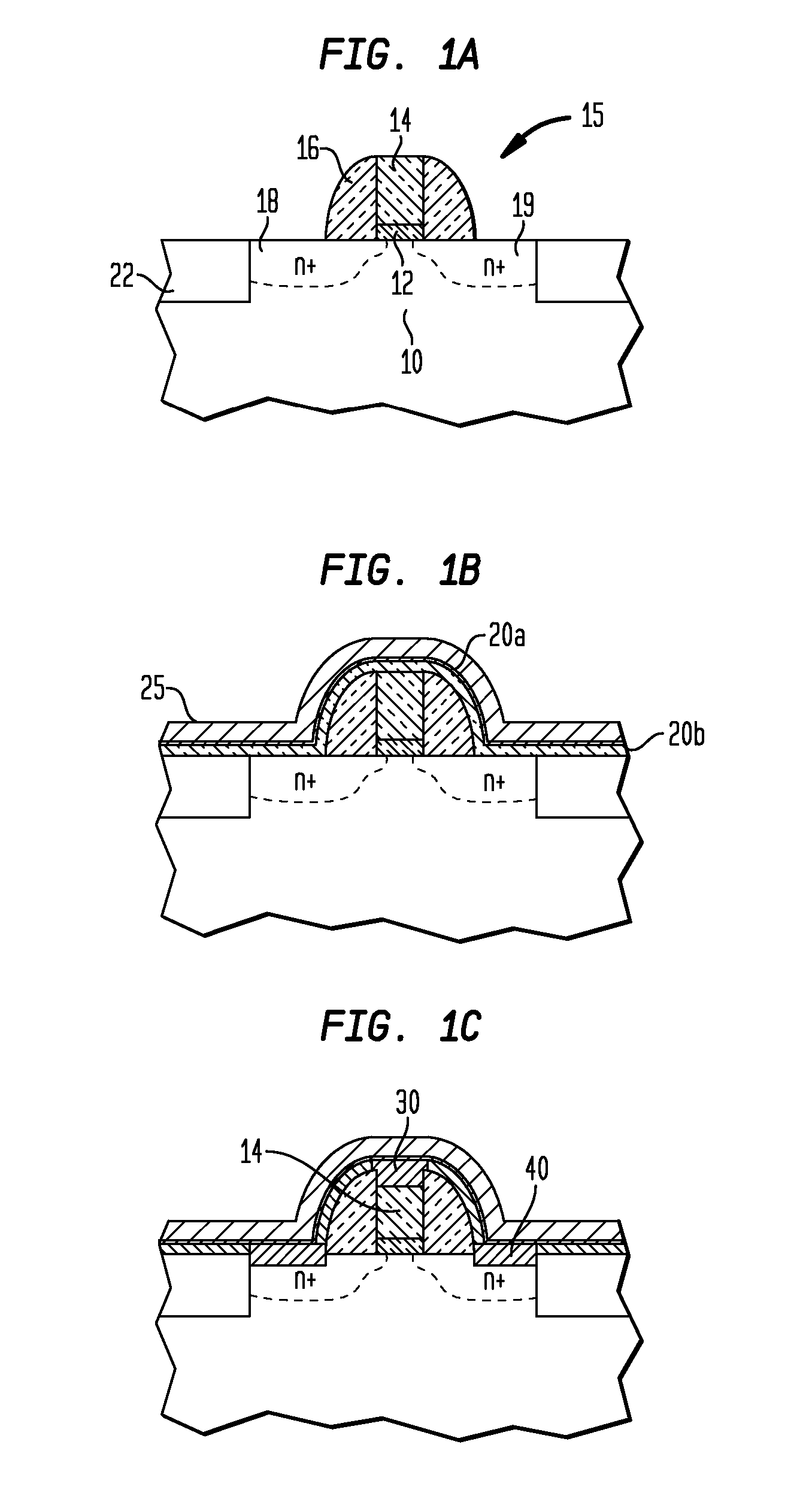Silicide cap structure and process for reduced stress and improved gate sheet resistance
a silicide cap and cap structure technology, applied in the field of self-aligned metal silicide contact structure, can solve the problems of increasing resistance and restricting the thermal process window, and achieve the effect of reducing gate and source/drain sheet resistan
- Summary
- Abstract
- Description
- Claims
- Application Information
AI Technical Summary
Benefits of technology
Problems solved by technology
Method used
Image
Examples
Embodiment Construction
[0041] The present invention, which provides a method of fabricating a semiconductor transistor device structure having a silicide region formed atop the transistor source / drain regions and formed atop the transistor gate region, will now be described in greater detail.
[0042] According to the invention, a composite silicide cap structure resulting from a salicide process includes a top layer of material providing a penetration barrier against oxygen, e.g., Ti or Co, and an intermediate layer of material adjacent to the silicide forming metal such as W, or molybdenum (Mo) that prevents the oxygen barrier from reacting with the silicide forming materials. The silicide cap provides a barrier to oxygen penetration into the metal used to form the silicide, and additionally has mechanical properties that allow selective formation of silicide on active areas, but not over insulators with out excessive mechanical energy build up within the cap and metal layer that leads to voiding and brid...
PUM
| Property | Measurement | Unit |
|---|---|---|
| thickness | aaaaa | aaaaa |
| thickness | aaaaa | aaaaa |
| thickness | aaaaa | aaaaa |
Abstract
Description
Claims
Application Information
 Login to View More
Login to View More - R&D
- Intellectual Property
- Life Sciences
- Materials
- Tech Scout
- Unparalleled Data Quality
- Higher Quality Content
- 60% Fewer Hallucinations
Browse by: Latest US Patents, China's latest patents, Technical Efficacy Thesaurus, Application Domain, Technology Topic, Popular Technical Reports.
© 2025 PatSnap. All rights reserved.Legal|Privacy policy|Modern Slavery Act Transparency Statement|Sitemap|About US| Contact US: help@patsnap.com



